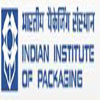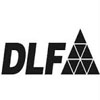-
Hitting an air-pocket
The paradox is striking. On the one hand, more and more Indians are taking to the skies. But on the other, airlines’ bottom-lines are shrinking.
In the recent December quarter, domestic air passenger traffic grew 23 per cent y-o- y to 2.72 crore. But all the three listed carriers — IndiGo Airlines, Jet Airways and SpiceJet — saw their earnings dip in what is considered a seasonally strong quarter. The profit of IndiGo and SpiceJet fell about 25 per cent y-o- y, while that of Jet Airways saw a much steeper fall of about 70 per cent. What gives?
Two factors — rising costs, especially that of fuel, and lower ticket prices — took a toll. With crude oil staging a comeback the past few months, the cost of aviation turbine fuel (ATF) headed north. As a percentage of sales, the carriers spent about 4-7 percentage points more on fuel in the recent December quarter, compared with the year-ago period. But rather than increasing ticket prices to offset the impact, the carriers took sharp cuts. Yields in the quarter fell about 16 per cent y-o- y for IndiGo, 10 per cent for SpiceJet and 3 per cent for Jet Airways. Blame this on price wars in the intensely competitive Indian skies.
The problem got compounded by demonetisation during the quarter with airlines slashing fares to offset the impact of the high-value note ban on passenger traffic. So, despite high passenger numbers, airlines’ revenue growth lagged far behind costs.
This high-cost, low-fares pincer has, in fact, squeezed many airlines for most of this fiscal year. For the nine months ended December 2016, IndiGo’s profit is down about 13 per cent y-o- y while that of Jet Airways has fallen nearly 55 per cent. SpiceJet did very well until September 2016 but it too buckled in the December quarter. Its nine-month profit is up about 14 per cent y-o- y, a fraction of the doubling until the September half-year.
Past perfect
The weak show this year is in sharp contrast to 2015-16 when airlines’ profits zoomed. The rout of crude oil enabled low fares that drew in passengers in droves.SpiceJet swung from a big loss a year before to a massive profit, Jet Airways saw its earnings jump more than 150 per cent, and IndiGo’s already healthy profit grew over 50 per cent in the year ended March 2016. The market, a slave to earnings, raised a toast. When crude oil and ATF were at their nadir in January-February 2016, airline stocks were touching their zenith. On the bourses, SpiceJet had quintupled and Jet Airways had tripled over two years while IndiGo nearly doubled from its already pricey listing in November 2015. But with earnings slipping over the past year, punishment has been swift and severe. From their peaks in early 2016, the Jet Airways stock has been marked down more than 50 per cent, IndiGo is down nearly 40 per cent and SpiceJet has slipped 30 per cent. No surprise that there is no word yet on GoAir’s initial public offer that was to hit the market this fiscal.
The ongoing March quarter could also be weak for airlines, given the base effect of low ATF cost in the year-ago period. Is there a rainbow on the horizon? A few factors should help airlines in fiscal 2017-18. One, oil prices should stay in the current $55-$60 range, given the global demand-supply dynamics. This should keep ATF cost stable; sharp increases seem unlikely. At these levels, most airlines should continue making reasonable profits.
Capacity addition
Also, with the effect of demonetisation gradually waning, price cuts should moderate. Given the huge potential in the country, passenger growth should continue at a healthy pace, provided tickets are not pricey. That said, the mega aircraft orders of several players, including IndiGo, SpiceJet and GoAir, could mean seat supply growing faster than passenger demand. This could keep yields under check, something that seems to be underway already. IndiGo, the market leader with a nearly 40 per cent share, has been adding aggressively to its fleet and network. But the airline has also taken the sharpest cut in yields. Calibrated capacity expansion in sync with passenger demand and pricing discipline will be key for sustainable growth of the sector.Improved airport infrastructure in big cities to cater to growing demand and fruition of the plan to put Tier II and Tier III cities on the flying map are also imperative. Thurman Thomas Womens Jersey
Share This



























































































